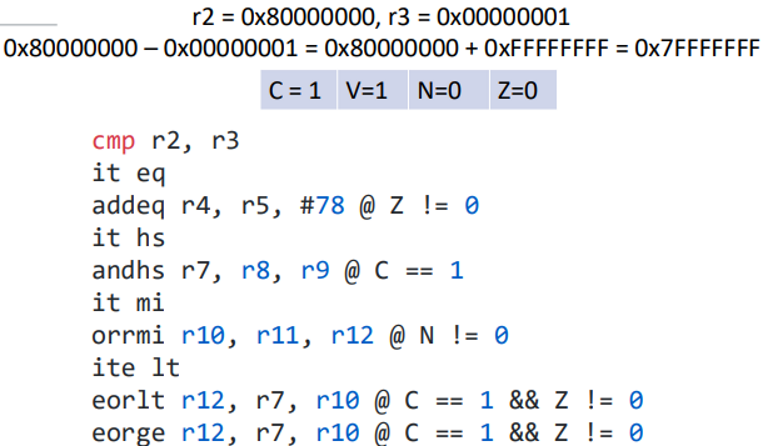Loops/Flow Control
1/16
There's no tags or description
Looks like no tags are added yet.
Name | Mastery | Learn | Test | Matching | Spaced |
|---|
No study sessions yet.
17 Terms
Pipelining
Widely used way to exploit inherent parallelism inside the CU to speed up the FDE cycle
Program Counter Register
Contains the address of the next instruction to be executed
PC = PC + 4 during fetch to point to next instruction
Branching Instruction
Change the PC to point to a different instruction than the next sequential instruction in memory
Updated by a different address in the execute phase
Types of Branches
Unconditional branching: always executes the target instruction
Conditional branch: Perform a jump when a condition is true

Label
Symbols that represent addresses (like pointers, only with a meaning during assembly phase - if not assembly phase then they are a concept)
The address given is calculated during assembly
Can point both to instructions or data
Developers avoid manually calculating addresses
A reference to one within the same section uses the program counter plus or minus an offset
This is called program-relative addressing
Example - Unconditional Branch
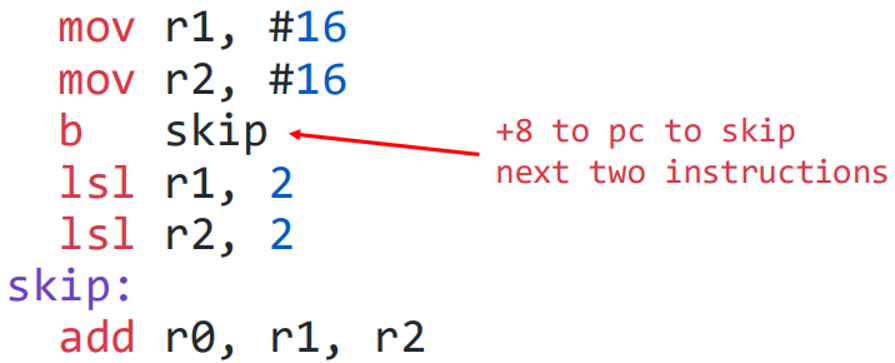
If Statement Code
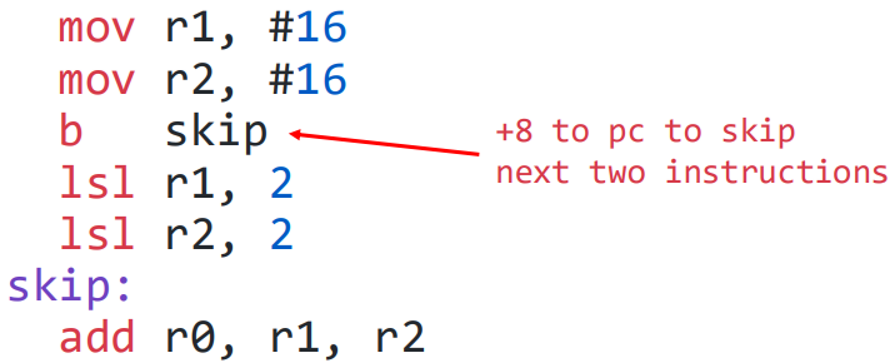
While Loop Code
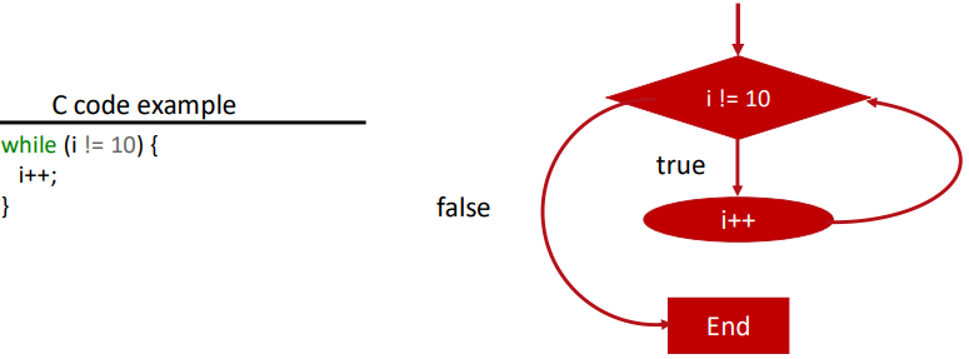
Current Program Status Register (CPSR)
An ARM register that records the state of the program
Arithmetic instructions will affect its value every time
N bit - "negative flag”: instruction result was negative
Z bit -"zero flag”: instruction result was zero
C bit - "carry flag”: Instruction causes a carry-out or borrow
V bit - "overflow flag”: Instruction produces an overflow in 2's complement numbers

CoMPare
Perform a comparison (substraction), updates the CPSR and discards the result

CPSR and Arithmetic Instructions
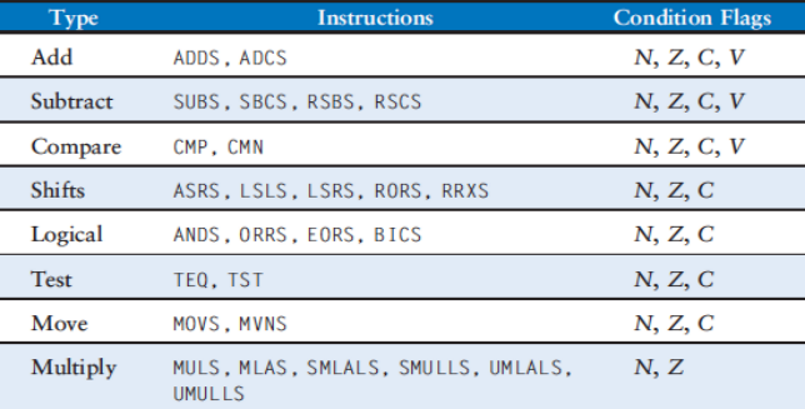
Conditional Branching
Branch instructions use a single 24-bit signed immediate operand
The remaining 24-bit two’s complement imm24 field is used to specify an instruction address relative to PC + 8
Branching instruction variation: BEQ, BNE,…
Their execution depends on the CPSR condition bits
If condition is false, then branch is skipped
You can construct any branch condition with the mnemonics in the table

Branch Mnemonics
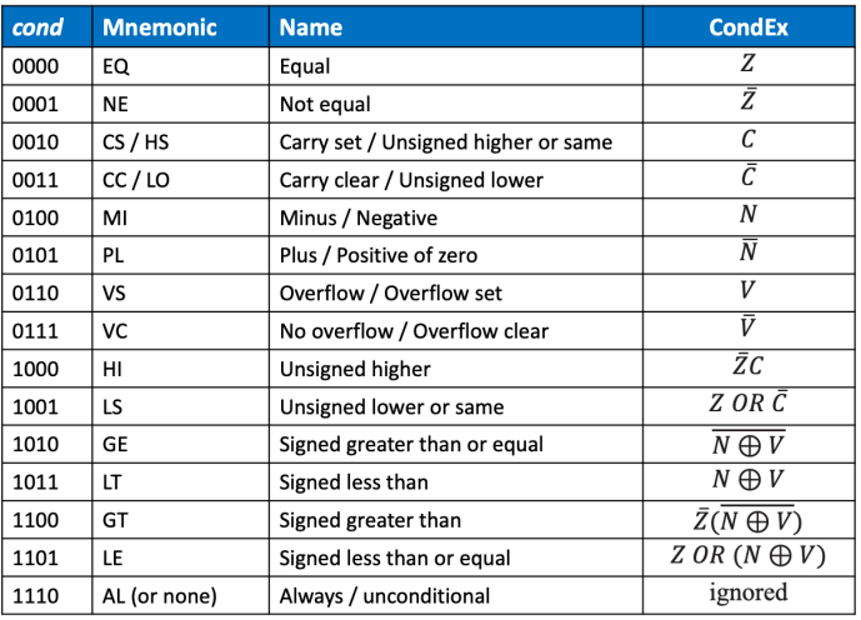
Branch Example - if-then-else
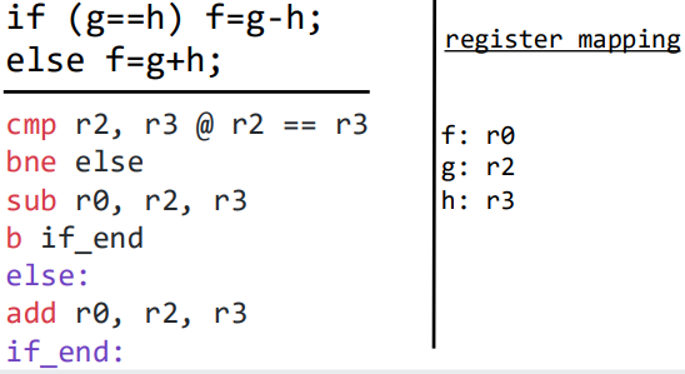
Branch Example - when
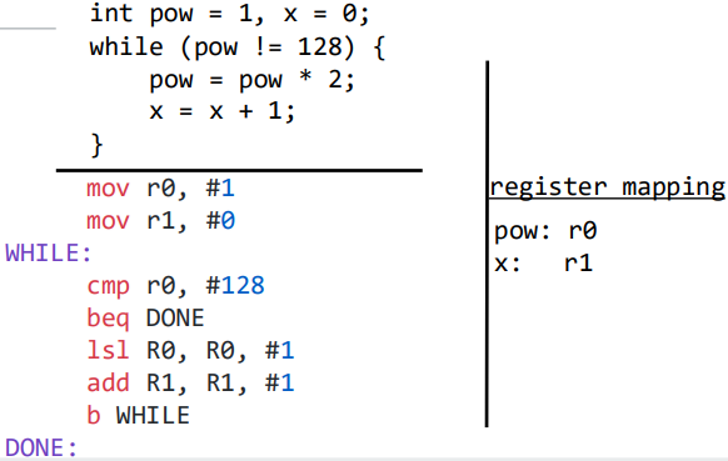
Conditional Instruction
ADDEQ, ADDNE
Thumb-2 introduced the If-Then (IT) instruction
providing conditional execution for up to four consecutive instructions. The conditions might all be identical, or some might be the inverse of the others
Instructions within an IT block must also specify the condition code to be applied
Conditional Execution Example
